
Asian Traditional Archery Research Network (ATARN)
Photographs/Illustrations © Stephen Selby, Hong Kong, 2003.
A1, Cloudridge,
30, Plunkett’s Road,
The Peak, Hong Kong.
Fax: (852) 2808-2887
email: srselby@atarn.org
January 2004
Dear All,
First, best wishes for the new year of 2004. Soon it will be the lunar new year of the Monkey, so have a happy one of those, too.
In December I had the pleasure of making my first visit to Taiwan. Not only was I able to visit the Taipei Palace Museum, the Taiwan Provincial Museum and the Collection of the Academia Sinica, but I was also able to visit ATARN friend, Jang Yokhua.
Yokhua is no stranger to those who frequent ATARNet: he has made a lot of postings and displayed photographs of his bow-making work. Aged 30, Yokhua started shooting seriously at the age of 16 when he was still at secondary school. At that time, American-made hunting bows started to appear in Taiwan and he and some of his friends became interested in them. Several people took up shooting with hunting bows in an indoor range in Taipei. After a while, Yokhua saw an antique Chinese bow in the collection of a friend who collected swords: he realized that horn was used in the construction of the bow; but at that time it did not occur to anyone that sinew was used as well.
Around 1990, after reading articles in some American archery magazines, Yokhua started to experiment with bow making (if you leave aside his first experiments with bamboo bows at the age of 11.) He obtained damaged antique bows from China and cut them up to see how they were made, then he went to the USA to learn from Jaap Koppedrayer, Lucas Novotny and Adam Karpowicz. Armed with his new understanding, he returned to Taiwan and made his first horn and sinew bow.
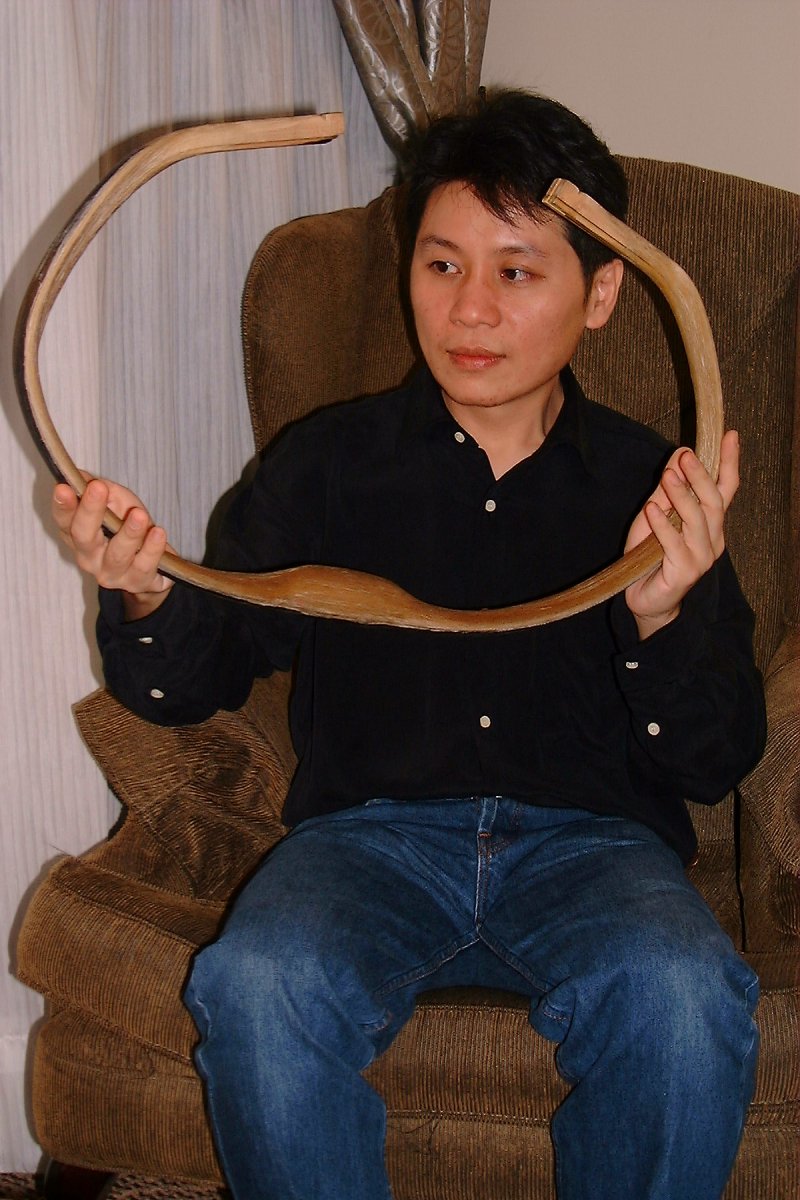
Jang Yokhua with a recently-sinewed Turkish style bow in
Taipei, Taiwan
Yokhua has devoted himself to making Turkish bows. I asked him why he had not naturally turned his hand to making Chinese bows.
"In China, the traditional bow-makers are not so open about sharing their knowledge," he replied. "Also, it's hard to lay my hands on good materials there. In any case, bows have taken many forms throughout Chinese history: there is no need to make long-eared Manchu bows just because I am a Chinese. The Ming bow design was actually very close to the Turkish form."
Yokhua is interested in horse riding and show jumping, but he hasn't ventured into horseback archery yet. He is keen to find out construction details of other forms of old bows, and perhaps make reconstructions of other historical bows such as Sindh bows, flight bows and the Khotan bow. He also wants to teach other people who wish to learn the craft. As far as his own technique is concerned, he is satisfied with the results he has obtained in sinewing bows, but says that he lacks skills in doing the final decoration.
Next month, Yokhua will be in Hong Kong on a return visit, so I hope he will find things to interest him here.
With kind co-operation from the Taiwan Provincial Museum in Taipei and the collections of the Department of Ethnology of the Academia Sinica, I was able to do a simple survey of the bows of the aboriginal tribes of Taiwan. Before the arrival of large numbers of Chinese ion the Ming Dynasty, Taiwan was mainly inhabited by a number of tribes such as Tsou, Atayal , Paiwan and Saixiat, who may have ultimately be connected to the Nanyue tribes of the Han Dynasty. The tribesmen were head-hunters right up until the 1930s. Many tribes were cruelly massacred during the Second World War for opposing the Japanese.
Early 19th C. European engraving of an Taiwanese Aboriginal
A good description of the archery equipment of Taiwan's aboriginal people can be found in Chen Chi-lu: "Material Culture of the Formosan Aboriginies". Taipei, 1988. There are good drawings on pages 150-151.
Most of the bows and arrows are close to the following form:
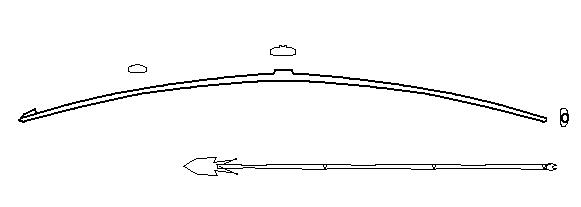
Atayal bow (un-braced) and arrow. Bow length 1.2m. Arrow:
90cm.
I had a chance to look at about 20 such bows, mainly from the Atayal and Paiwan people. The general design is as follows: the majority of the bows were made of hard wood - probably black palm. Some were made of bamboo. The string is fixed permanently at one end to a thickened bow-tip which is frequently furnished with an iron ferrule. The other tip has a peg for attachment of a loop at the other end of the string. The strings were all made of plant fibre. At the back of the grip of the bow was a wooden build-out with a carved vertical groove. When unstrung, the string is reversed on the bow-stave and slotted into the groove, which acts as a string keeper. The unstrung bow thus doubles as a staff. When strung, this string keeper is on the back of the bow and does not interfere with the grip. All the arrows were bamboo, self-nocked, and many seemed to have been unfletched, although some fletched arrows were present. Arrowheads were mostly iron and designed for fishing (hence, presumably, the absence of fletching.)
An interesting departure from this standard design was a bow of the Atayal people, on which the 19th Century engraving above was presumably based. There are good drawings in Chen Chi-lu's book. I was unable to find an example other than a single bow that had been converted into a crossbow prod. (Actually, although in the collection at the Provincial Museum the crossbow stock and bow are presented together, I have some doubts about whether they were associated originally: the bow does not fit the rectangular hole in the stock.)
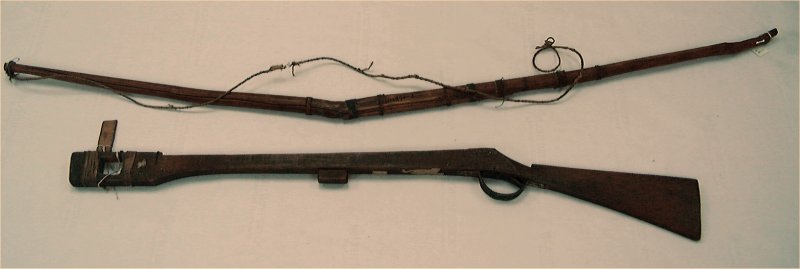
Atayal recurved bow modified as a crossbow prod. (?)
Collected during disarming of Taiwanese villagers by the Japanese Army at a
Saixiat village in the 1930s.

Paiwan Iron Points
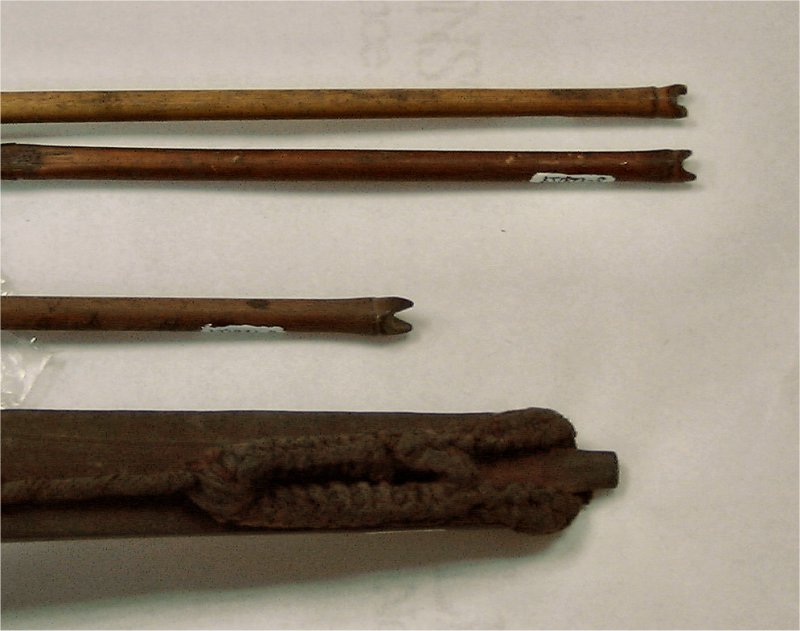
Bow-tip with braided loop and arrow nocks: Paiwan tribe.
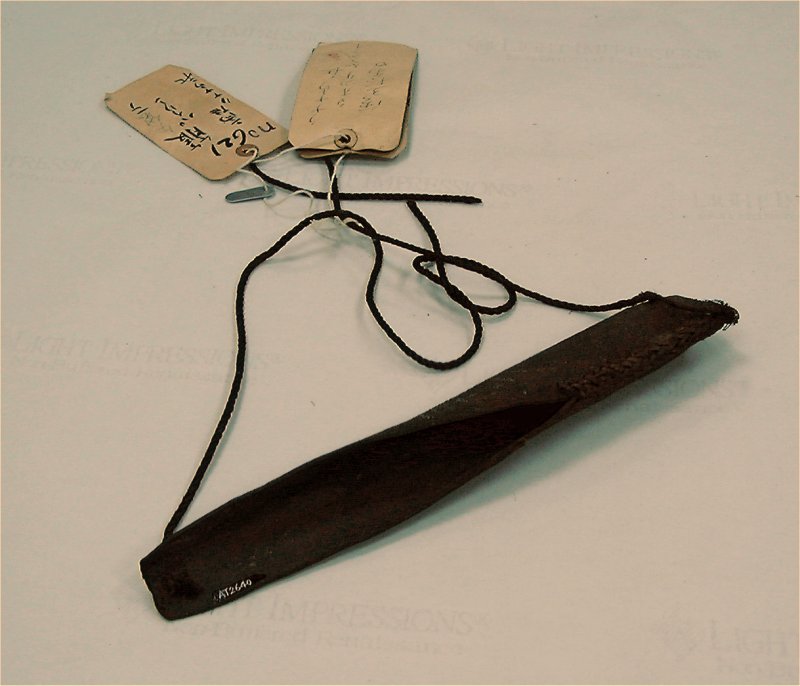
Quiver: Paiwan Tribe. Collected at Kulalao Settlement, 1930
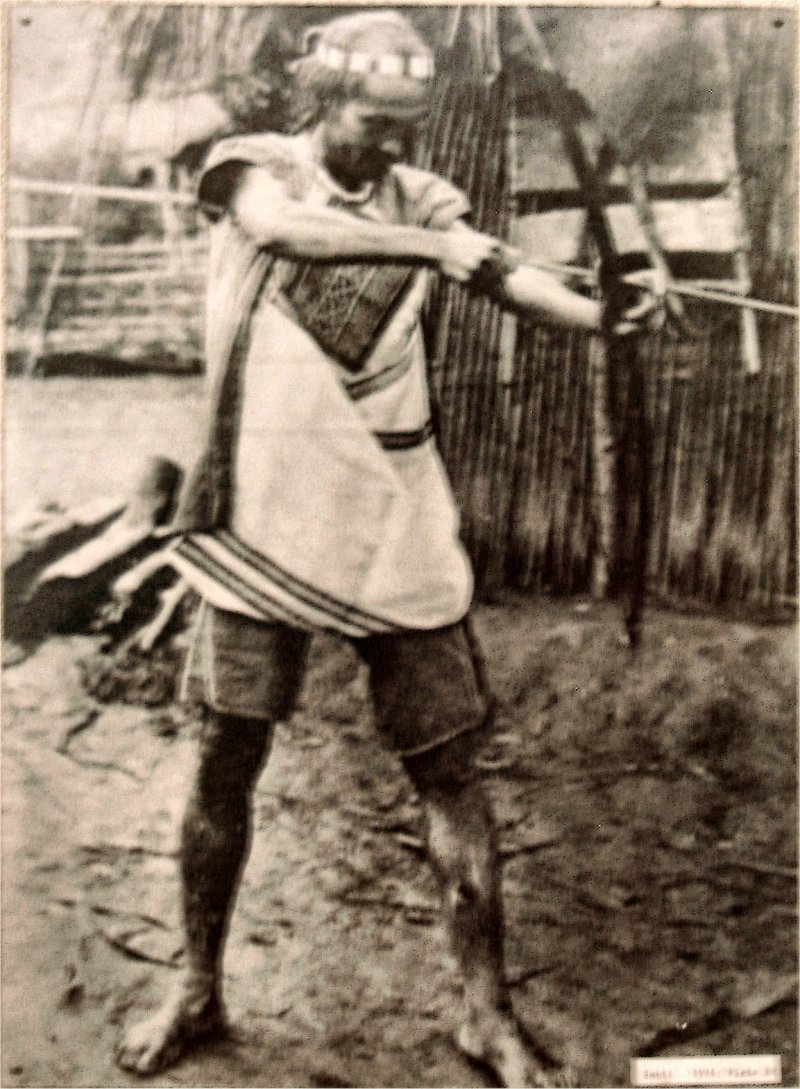
Atayal archer, C. 1931.
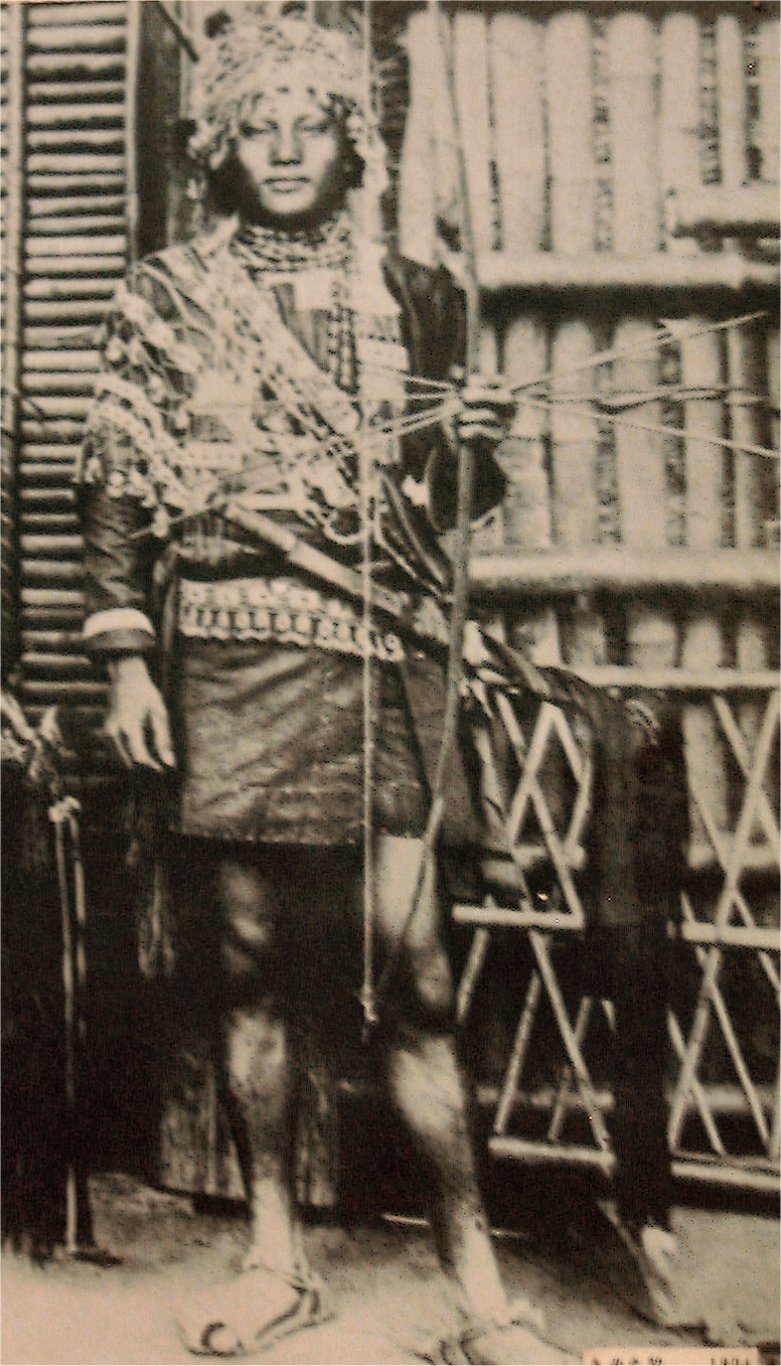
Tsou villager with braced bow and arrows. 1916
(Courtesy Academia Sinica, Taiwan)
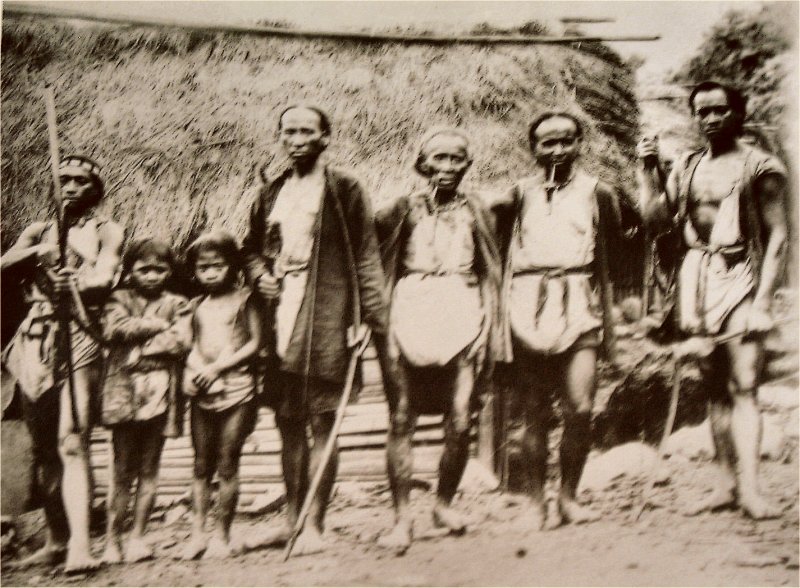
Paiwan Villagers, c. 1904
(Courtesy Academia Sinica, Taiwan)
 "Sui"
was the term used in the Chinese Zhou period (about 1100-771BCE) archery rituals
to denote a bracer. Originally, the character was used for a drainage channel
laid along the side of a road. No mention can be found of what these bracers
looked like: indeed we only have the word of Han dynasty commentators writing
much later that this was what the word 'sui' meant.
"Sui"
was the term used in the Chinese Zhou period (about 1100-771BCE) archery rituals
to denote a bracer. Originally, the character was used for a drainage channel
laid along the side of a road. No mention can be found of what these bracers
looked like: indeed we only have the word of Han dynasty commentators writing
much later that this was what the word 'sui' meant.
However, recently I have had a chance to acquire some objects that have been described in catalogues as 'arm-guards used by falconers.' That such objects were arm-guards is likely; but after discussing with falconers attached to the Leeds Armoury in the UK, it is most unlikely that such small, hard and slippery objects would have been a good perch for falcons. I now hold the view that these objects are in fact 'sui' - the bracers used in the Zhou archery rituals. The one illustrated below is a fine specimen made of greenish-white nephrite jade. It is extremely thin (2-3mm), 9cms long and 7.5cms wide. The outer surface is finely carved with cloud scrolls, and 'pan' dragons. It has two rectangular piercings to take a main band to secure it on the lower arm, and four smaller piercings to take thin threads.

Spring and Autumn Period 'Sui' Bracer in Nephrite
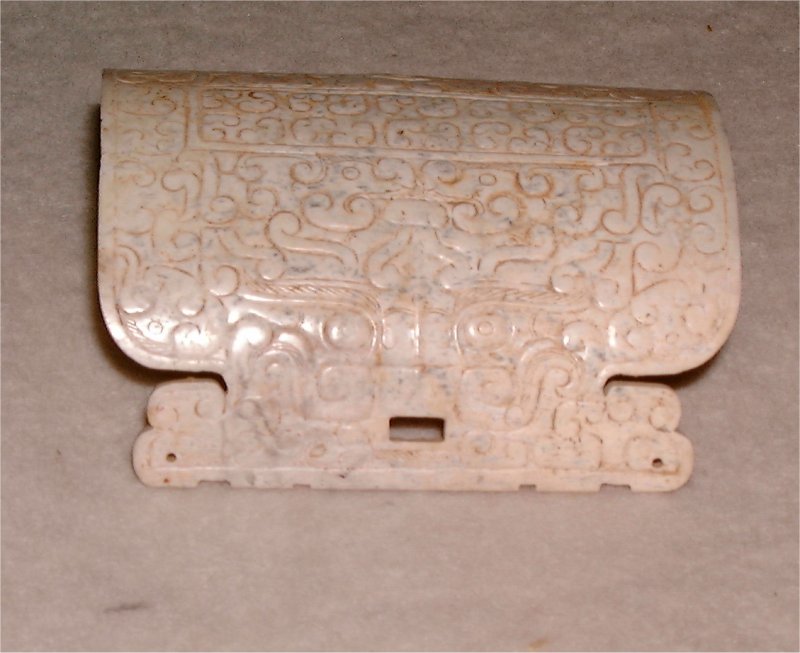
Side view
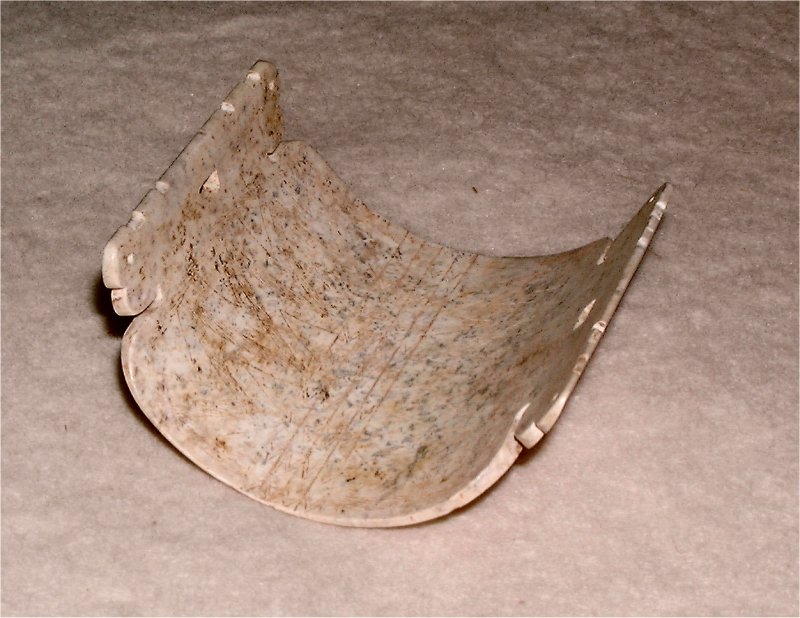
Inside of bracer (also carved with rough, geometric designs.)
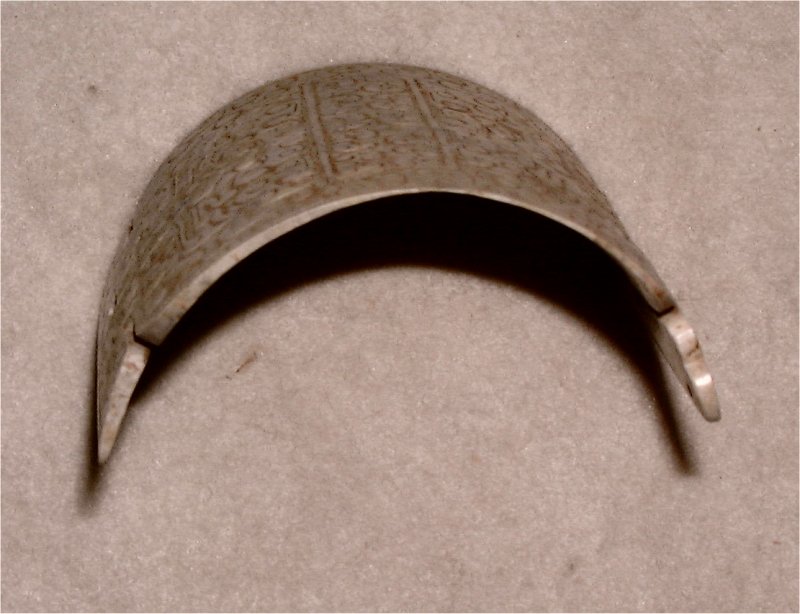
End view
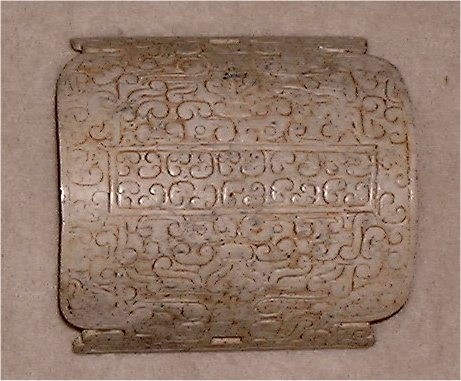
Top view
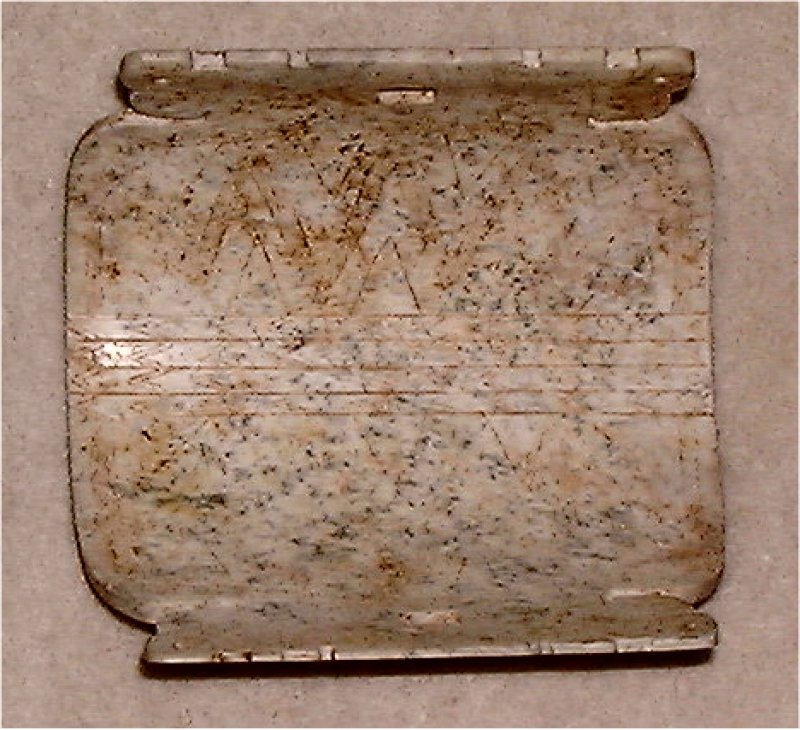
Bottom (inside) view
I believe that falconry is only depicted in China from the Tang Dynasty. There is no mention of it in early Chinese literary texts. It was prevalent by the Liao (Khitan) Dynasty (907-1125) and it is therefore not surprising that items similar to the one shown above, excavated from Liao burials, are also interpreted as being arm-guards for falconry. But given the very close similarity to the Zhou 'sui', it is worth considering whether the latter objects were not also bracers. I illustrate one in ivory below. (The blue stain is caused by association with copper objects in the grave.

Ivory bracer (?): outside view (Liao). 8 cmx5cm
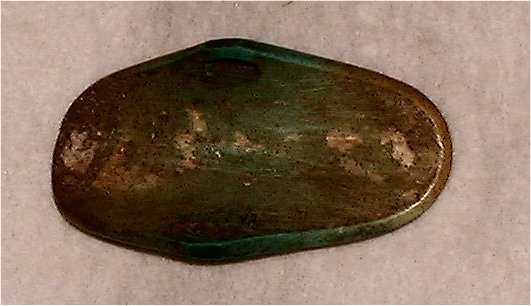
Ivory bracer: inside view (Liao)
I look forward to reading your comments on ATARNet.
|
|
(Signed) (Stephen Selby) |